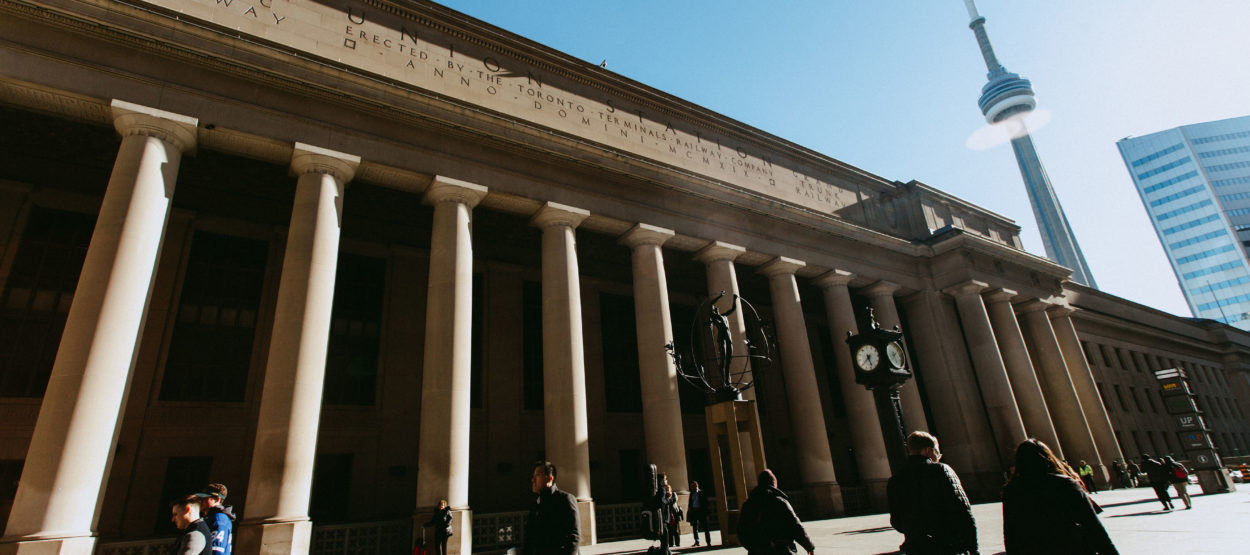From an architectural standpoint, Union Station has had many lives. The first wooden structure was erected in 1858 and rebuilt twice before it was destroyed by the Great Fire of Toronto of 1904. The landmark Beaux-Arts building we know today opened in 1927. Every architectural iteration tells a rich and complex story of how the city and surrounding areas were transformed by the expansion of railway lines that propagated trade as well as commercial, industrial, and financial interests.
At the time of its public opening in 1927, Union Station was situated near Toronto’s natural shoreline, which has since been extended south by more than a kilometer over the last century. The Toronto Harbour Commission Building, located a block from the station, is a present-day marker for what was the natural shoreline at the time of human settlement. Earlier still, before the Laurentide Ice Sheet melted, the shoreline traced the edge of what is now Davenport Road.
Today, Union Station is the most trafficked transit hub in the country, with over 300,000 people moving through it each day. Over the past decade, the City of Toronto has been leading a revitalization project to preserve the building’s heritage elements, improve transportation, and implement free multidisciplinary programming for the public. Ultimately, the station tells the complex story of how geological changes and urban infrastructure have come together to constitute the place we now call Toronto, a bustling city relatively divorced from its shoreline, sitting atop long-since buried waterways that served as our earliest routes of trade, transportation, and connection.
This Biennial site description was generated by the curatorial team, in consultation with our creative partners, to offer lesser-known facts and histories, and explore sites in relation to the changing shoreline.
This Biennial site was made possible through a partnership with Toronto Union.
Photo credit: Spring Morris Photography

